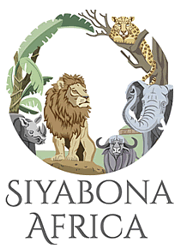
About the Far North
From Punda Maria
Klopperfontein to Parfuri
Luvuvhu and Nyala Drives
Makuleke Wilderness
Pafuri Area
Pafuri Gate
Punda Maria Gate
The Mahonie Loop
See Kruger Park Far North Self-drive Map

The surrounding woodlands are a mixture of bushwillow and marula with a bit of mopane. There is a Day Visitors' Centre a few hundred metres along the H13-1, a recommended stopping point to acclimatise to the Park and learn about the natural and human history of the far north.
Elephant usually browse along this road. Although there are lion in the area, they are not often seen.
In 1981, three workers from Punda broke all the Park rules by arriving late at the gate from their weekend leave. They persuaded the guards to let them through and rode off into the dark on their bicycles on the nine-kilometre trip to Punda Camp. Only two of them arrived.
The shocked survivors described how a lion had leapt out of the dark at the lead cyclist but missed him. The lion then went for the second bicycle - on which two of the men were riding. The man on the back - Louis Mathye - fell off as his terrified friend accelerated away, pedalling for his life.
Punda's head ranger, Louis Olivier, and several assistants then raced back along the road and found a semi-mutilated black-maned lion tearing at Mathye's dead body.
Olivier shot it at once. When they examined the animal, they found it had been starving to death - it was missing the lower part of its left hind leg, presumably caught in a snare - and had probably gone after human prey as a desperate option.

Punda Maria Gate Routes
- Directly to Punda Maria Rest Camp, just over 10km from the gate; (tar road through sandveld and mopane woodland; allow approximately 30 minutes)
- Drive to Pafuri area, via the S60 to Klopperfontein (21km dirt road through tall mopane woodlands) and then 23km along the H1-8 (tar road through mixed mopaneveld and sandveld); estimated 2 hours' travelling time to Luvuvhu River Bridge;
- Head to Shingwedzi along the H13-1 to the main road (H1-7); tar all the way through mixed mopaneveld and grassland (75km to Shingwedzi; allow approximately 5 hours).

In the Punda Maria area
Animals
Sharpe's grysbok
Wild dogs
Zebra
Kudu
Elephant
Birds
Arnot's chat
Eastern nicator
Yellow-billed oxpecker
Grey-headed parrot
African harrier-hawk (gymnogene)
Around Punda
There are three main drives around Punda Maria - Mahonie Loop, the Klopperfontein road (S60, S61) past the mythologically rich Gumbandebvu koppies and the tar road (H13-1) between Punda Maria Gate and Dzundzwini Hill. To the north-west of Punda Maria - in an area inaccessible to all except hikers on the Nyalaland Trail - are the remains of the 18th-century hilltop village,
Makahane. This was named after a particularly ferocious chief, "Makahane the Brute" who had his enemies and petty offenders thrown from the cliffs to their deaths in the Luvuvhu River below. Makahane was murdered and buried there.

What's in a Name ?
The name Punda Maria is a bastardisation of the Swahili word for zebra, which is punda miliya. The name of the camp was coined in 1919 by the first ranger in charge of the area, JJ "Ou Kat"Coetser, who named it after his wife, Maria.
She apparently hated the rigours of living in such an isolated part of the country and had a predilection for striped dresses. Coetser, himself, was fired as a ranger for shooting animals and was eventually killed by a bull elephant near the Limpopo River.
Stevenson-Hamilton never had much time for Coetser who he described as a "gasbag". The Parks Board renamed the camp and the gate as Punda Milia under the impression that it had been a spelling mistake and that zebra were the first animals seen in the area. After representations from Coetser's family in 1979, the original name was restored.

 Being the northernmost camp in the Kruger National Park, Punda Maria Rest Camp has a sub-tropical climate that lends a unique wilderness atm...
Being the northernmost camp in the Kruger National Park, Punda Maria Rest Camp has a sub-tropical climate that lends a unique wilderness atm... Punda Maria is the most accessible entrance to the Pafuri area of Kruger National Park. See the best routes to Punda Maria....
Punda Maria is the most accessible entrance to the Pafuri area of Kruger National Park. See the best routes to Punda Maria....